Top speed 583 km/h Length 11 m Weight 1,175 kg | Range 2,500 km Wingspan 11 m Engine type Turbofan | |
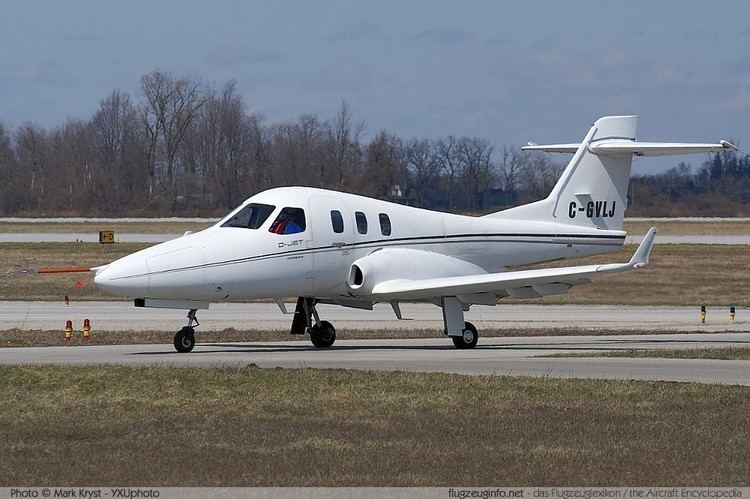 | ||
Unit cost 1,890,000–1,890,000 USD (2009) | ||
Diamond d jet very light private jet specs features loreancora
The Diamond D-JET is a composite, five-seat, single-engine jet aircraft developed by Diamond Aircraft Industries. The intended cost was advertised as US$1.89 million dollars in March 2009.
Contents
- Diamond d jet very light private jet specs features loreancora
- Garmin glass cockpit of diamond d jet nice
- Design and development
- Specifications D JET
- References
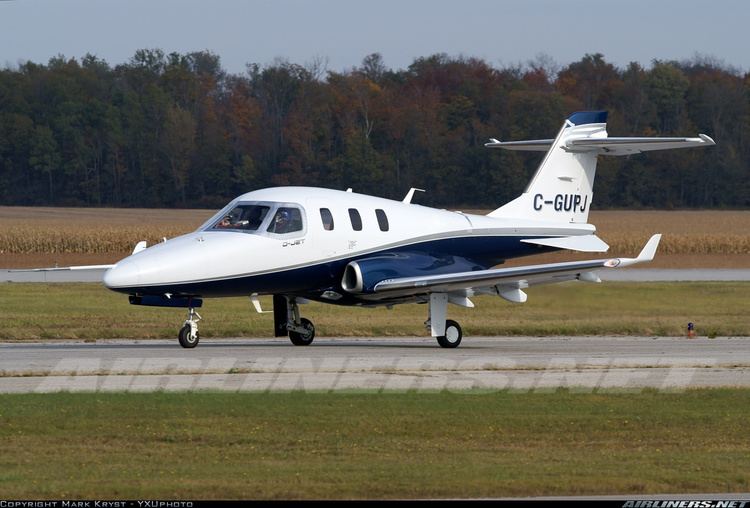
By February 2013 the aircraft's development program was suspended pending company reorganization and the D-Jet workforce had been laid off. In May 2014 the company confirmed that the project remained suspended, but not cancelled.
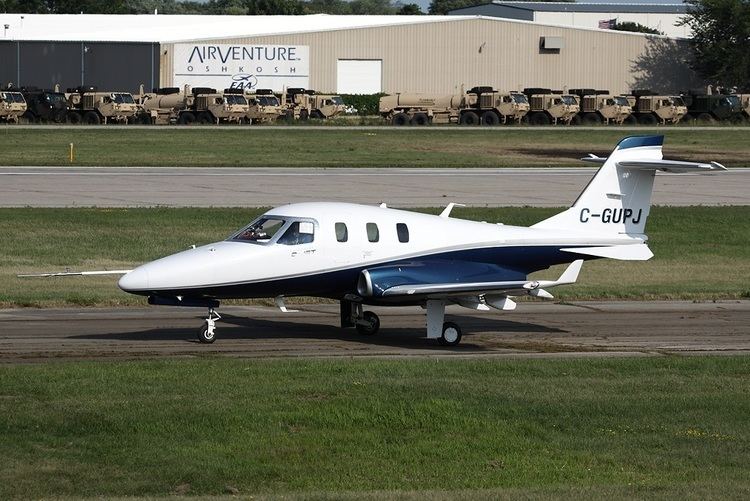
The December 2016 sale of a majority share of Diamond Aircraft Canada to Wanfeng Aviation of China will result in a re-assessment of the D-Jet program for possible resumption of development.
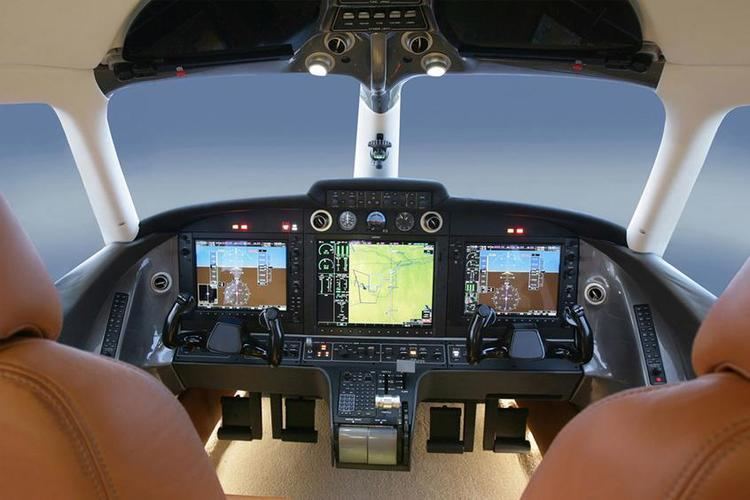
Garmin glass cockpit of diamond d jet nice
Design and development
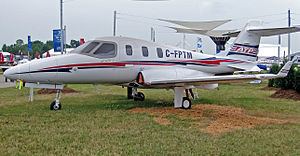
Diamond targeted the design at the owner-pilot market, seeing it as more practical for single-pilot operations than the Eclipse 500 and the Cessna Citation Mustang. By limiting the altitude to 25,000 feet, pressurization failures would be less critical emergencies, too. Diamond intends the D-JET to have a lower operating cost than other very light jets.
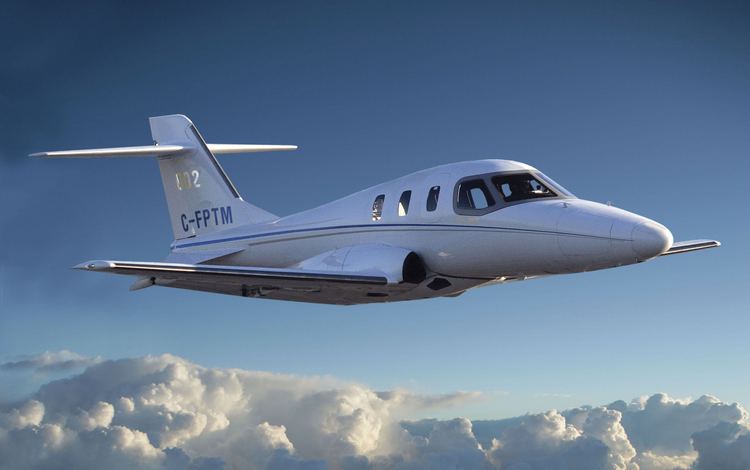
On November 9, 2006, at the AOPA Expo in Palm Springs, California, United States, Diamond announced that ATP Flight School (ATP) had placed the first fleet order for 20 Diamond D-JETs. The intention at that time was that ATP would provide factory-approved training to D-JET purchasers beginning in 2008. Toronto-based Chartright Air Group ordered 10 D-JET aircraft with expected delivery beginning 2010.
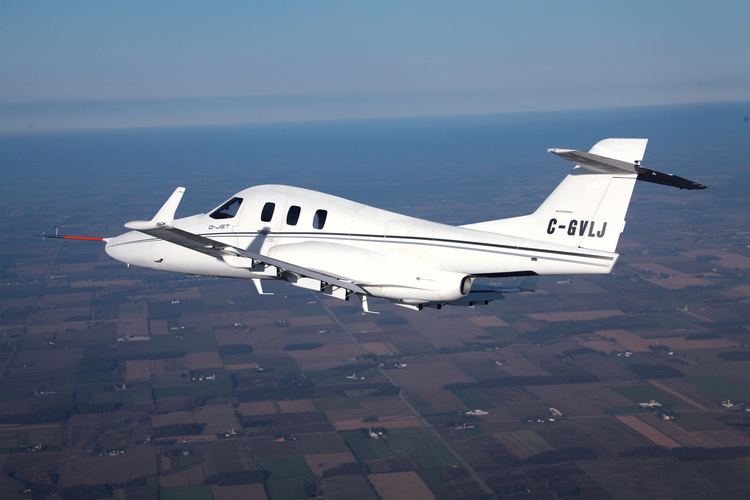
In February, 2008 Diamond announced that the aircraft will be built in a new plant in London, Ontario, Canada. This announcement came after the Government of Canada announced it was giving the company a “Cdn$19.6 million strategic, repayable investment” and the Government of Ontario announced that it had given the company Cdn$11 million. Diamond claims that research and development costs for the D-JET have been Cdn$95.2 million and that the plant to build the aircraft will cost an additional $100 million.
In October 2008 Canadian charter operator SwiftJet announced that they had ordered five D-Jets with options for ten more. SwiftJet's intention is to offer air taxi service "anywhere and anytime to destinations around the world." SwiftJet currently operates one Dassault Falcon 20 in the charter role.
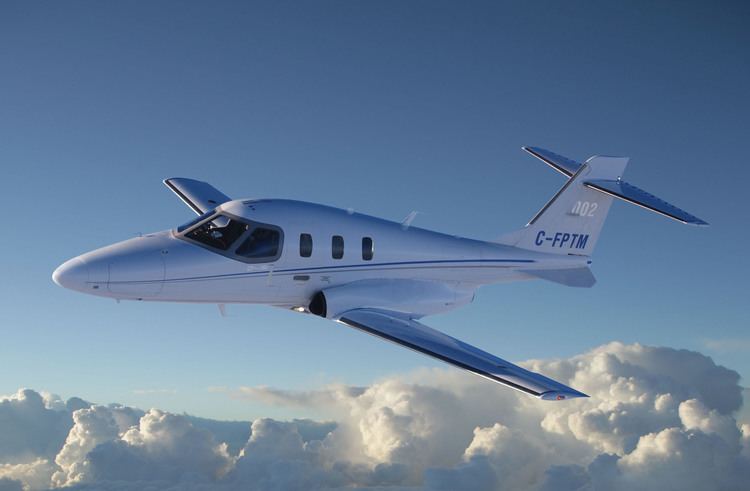
The Government of Ontario loan was contingent on a matching loan from the federal Canadian government, which was not approved and so the 213 laid off employees were not rehired.
The D-JET was initially to be powered by one Williams FJ33-4A-15 turbofan engine. That 1,564 lbf (6.96 kN) thrust engine was found in early 2008 to produce insufficient bleed air for cabin pressurization and other services. As a result, a decision was made to switch to the Williams FJ33-4A-19 turbofan engine, which produces 1,900 lbf (8.5 kN) of thrust instead.
The switch in engines delayed the certification schedule and moved the projected first customer deliveries of the aircraft into the spring of 2009.
Diamond is also developing a military trainer variant of the D-JET that will likely feature Martin-Baker lightweight ejection seats and is intended to sell for under US$3M.
The first flight of the D-JET was made on 18 April 2006 from the London International Airport (ICAO: CYXU) in Ontario, Canada the homebase of Diamond’s North American division. The flight was piloted by test pilot Gérard Guillaumaud and lasted 1:06 hours. The aircraft's public debut was at Oshkosh in July 2006. At that time Diamond expected certification to be complete by the middle of 2009 with deliveries starting at the same time.
On 20 July 2007 Diamond Aircraft announced the roll out of its second D-JET, serial number 002. Serial number 002 is the first D-JET intended to conform to the expected production configuration in its structural layout and aerodynamic design. D-JET prototype serial number 002 first flew on 14 September 2007. It was joined by D-JET Serial Number 003, which first flew on April 15, 2008.
Flight testing and program development was halted in the spring of 2011 as the company lacked funds to proceed. After a failed campaign for federal government support, private investment was found and test flight resumed in September 2011.
In July 2012 the company announced that 700 hours of flight testing had been completed, reaching Mach 0.56 (346 kn (641 km/h) true airspeed) along with 30,000 pressurization cycles on a test fuselage. Winglets were added to the aircraft to improve roll control at all speeds, especially in the stall. With that addition the design was frozen and the company commenced building production tooling for the fourth serial number. At this time certification was forecast for late in 2013 with production deliveries to commence in the third quarter of 2014.
In late February 2013, having not located further operational funding after the failed sale to Medrar in 2011, the company laid off the majority of its Canadian staff and suspended work on the D-Jet program, indicating that the company needed to reorganize. By May 2014 work on the D-Jet remained suspended, but the project had not been cancelled. The program remained suspended in February 2016.
Due to the sale of a majority share of Diamond Aircraft Canada to Wanfeng Aviation of China in December 2016 a re-assessment of the D-Jet program for possible resumption of development will be conducted.
Specifications (D-JET)
Data from Diamond Aircraft
General characteristics
Performance
